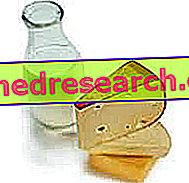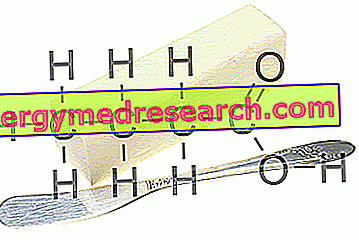Calcium is the most abundant mineral in the human body. By binding to phosphorus it forms hydroxyapatite crystals, which is the crystalline structure of bones and teeth. About 99% of body calcium is present in these two structures for a total of about 1200 grams (the calcium-phosphorus ratio in the bones is 2.5: 1).

As we said earlier, calcium is found mainly in the bones, deposited in the form of hydroxyapatite crystals, these deposits are insoluble but can be used by the body in case of need. The calcemia (the concentration of calcium in the blood) always remains within a range of constant values as it is not directly regulated by dietary intake. Three hormones intervene to keep calcemia constant: vitamin D, parathormone and calcitonin. Vitamin D regulates the absorption of calcium in the intestine, the parathormone mobilizes it from the bones (increases osteoclastic activity) while calcitonin favors its deposition (increases osteoblastic activity). Calcitonin and parathormone form the so-called calciostatic system, thanks to which the calcemia is maintained around the constant value of 10 mg / 100 ml. Also the kidneys can intervene in the regulation of calcemia by acting on the share of resorbed calcium.
In the Italian population the average daily intake is about 500-800 mg of calcium. Only a small part (20-30%) of this quota is actually absorbed. At intestinal level absorption is favored by the presence of vitamins A, C, D and by the presence of fats and bile salts. On the other hand, oxalic acid and phytic acid exert an inhibitory effect on calcium assimilation. These acids can significantly alter the balance of calcium in the body, especially if large quantities of oxalate-rich vegetables (spinach, watercress, beetroot, tomatoes, etc.) or whole grains or flours are introduced alongside a reduced intake of calcium. of wheat, barley, oats, corn that contain a lot of phytic acid. Other foods that reduce calcium absorption are caffeine, sodium (salt) and high protein intake. Lactose (the sugar present in milk) facilitates absorption instead.
Calcium introduced with food is absorbed in the small intestine. This process is favored by vitamin D, gastric acidity, lactose and ascorbic acid. On the contrary, it is less favored by the lack of vitamin D and by too many vegetable fibers introduced with the diet.
Calcium is mainly found in dairy products, some crustaceans and fish (lobster, sardines and salmon), legumes, broccoli, eggs and almonds
A CURIOSITY: Calcium is a natural relaxant and if taken from 20 to 40 minutes before going to sleep, it promotes night rest.
The daily requirement for adults is estimated at around 800-1000 mg.
The following table shows the recommended daily intake levels for different ages (LARN)
| Category | Age (years) 1 | Weight (kg) 2 | Calcium (mg) |
| infants | 0, 5-1 | 7-10 | 500 |
| children | 1-3 | 9-16 | 800 |
| 4-6 | 16-22 | 800 | |
| 7-10 | 23-33 | 1000 | |
| males | 11-14 | 35-53 | 1200 |
| 15-17 | 55-66 | 1200 | |
| 18-29 | 65 | 1000 | |
| 30-59 | 65 | 800 | |
| 60+ | 65 | 1000 | |
| Females | 11-14 | 35-51 | 1200 |
| 15-17 | 52-55 | 1200 | |
| 18-29 | 56 | 1000 | |
| 30-49 | 56 | 800 | |
| 50+ | 56 | 1200-1500 | |
| expectant | 1200 | ||
| Nourish | 1200 |
1 The upper limits of the age range are understood up to the completion of the next birthday (for example with "1 - 3 years" means from 1 year just completed up to the completion of the 4th year). The last age group of women is "50 and more" because with menopause the needs of two important nutrients change: calcium and iron. In humans the last age group is "60 and over".
2 In infants, children and adolescents, the weight ranges are the reference values taken from table 1 of the "Energy" chapter: the lower limit of the interval corresponds to the weight of the females in the lower age class, while the upper limit corresponds to the weight of males in the highest age group. The average desirable weight of males and females in the Italian population has been reported in the adult (see chapter "Energy").
5 In post-menopausal women, a calcium intake of 1200 to 1500 mg is recommended in the absence of estrogen therapy. In the case of estrogen therapy, the requirement is equal to that of the elderly males (1000 mg).
SOCCER, OSTEOPOROSIS AND PHYSICAL ACTIVITY
Physical activity is a powerful stimulus to maintain or increase bone mass. In this regard, anti-gravity type activities such as walking, running and dancing are recommended. The weight of the body, in fact, positively stimulates the calcification with a consequent increase in bone density.
There is no better age than another to benefit from the regular practice of sporting activities. Even at the age of 70-80, a former athlete who remains physically active has a higher bone mass than sedentary individuals of the same age.
The peak bone mass represents the maximum mineral density value. It depends on genetic and environmental factors and is reached at a young adult age (around 20-30 years). A reduced peak in bone mass increases the risk of osteoporosis in old age, when the protective action exerted by sex hormones (testosterone for men and estrogen for women) decreases. The regular practice of physical activity during the adolescent / juvenile period favors maximum bone mineral development, removing the risk of osteoporosis in old age.
However, in young athletes, excessive sports combined with caloric restrictions can even increase bone fragility and the risk of fractures. In adulthood the practice of physical activity at a high level can lead the female athlete to the point of developing the so-called triad, a pathological picture characterized by: eating disorders, amenorrhea and early osteoporosis. If these phenomena persist for long periods the positive effects of the exercise on the bone mass disappear and the negative ones prevail.



